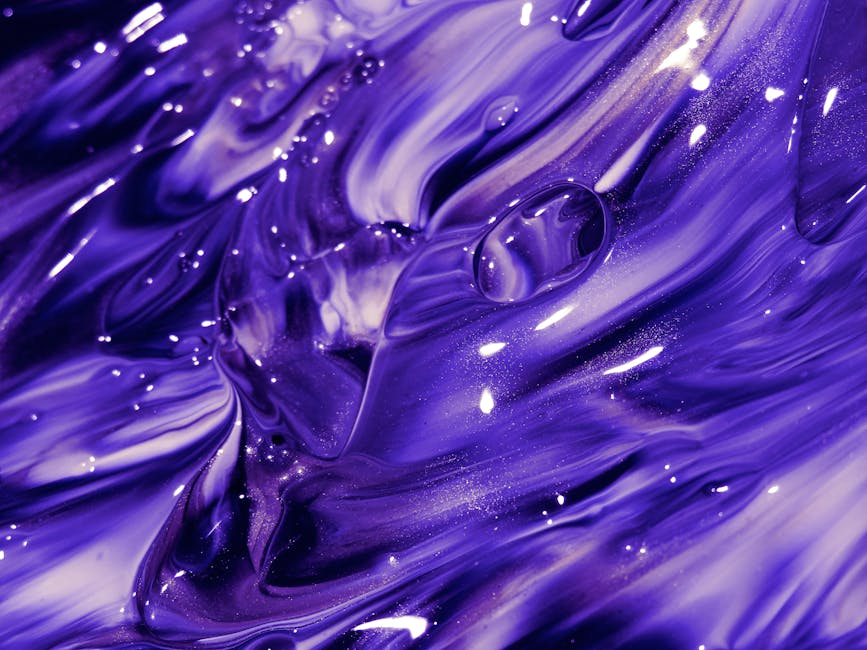Color Therapy: Discover How Colors Impact Your Well-Being
When was the last time you considered the colors around you? Whether it's the soft blue of your morning sky or the vibrant red of your favorite shirt, color plays an undeniable role in shaping our emotions and health. Color therapy, an ancient practice gaining modern traction, explores how hues affect our mental and physical wellness. Understanding the psychology of color can empower you to make conscious choices that uplift your mood and enhance your well-being. So, are you ready to dive into the colorful world of health and wellness?
What is Color Therapy?

Color therapy, or chromotherapy, is a holistic healing method that utilizes colors to promote physical and emotional healing. Rooted in the idea that different colors have distinct energies, this therapy aims to re-balance your body and mind by harnessing these energies. Think of it as a way to paint your life with colors that enhance your feelings, calm your nerves, or invigorate your spirit.
This form of therapy aligns closely with concepts from both art therapy and environmental psychology, focusing on the profound impact your surroundings have on your mood and overall health. For a deeper understanding of how subtle changes can lead to significant improvements in mental health, consider reading our article on Feng Shui for Mental Health.
The Science Behind Color and Emotion

Research suggests that colors can evoke specific emotional responses. For example, warm colors like red and orange are often associated with excitement and energy, while cooler colors like blue and green tend to promote relaxation and calmness. Let's explore how some popular colors can impact your emotional state:
Red: The Color of Passion and Energy

Red is a powerful color that stimulates energy, passion, and urgency. It is often used in marketing to grab attention, but it can also increase heart rates and boost energy levels. If you're feeling lethargic or need motivation, incorporating red hues into your environment—like a red vase or artwork—might provide that extra pep in your step.
Blue: The Color of Calm

Blue is widely regarded as a calming color that promotes tranquility and focus. This shade is often used in bedrooms and workspaces to create a serene atmosphere conducive to relaxation and concentration. If you struggle with anxiety or insomnia, try adopting more blue elements in your space, such as painting a wall in light blue or using cool light tones.
Yellow: The Color of Happiness

Yellow, the color of sunshine, is linked with happiness and optimism. This vibrant hue can brighten your mood and stimulate mental activity. However, it's essential to use yellow sparingly since too much can lead to feelings of frustration or anger. Incorporating yellow accents—like cushions or art—can bring cheerful energy into your life.
Green: The Color of Balance

Green represents nature, growth, and harmony. It is an excellent color for promoting a sense of balance and restoring energy. Studies show being around greenery can refresh the mind and boost your mental well-being. Consider adding indoor plants or green decor elements, as they can help foster mental clarity and peace.
Purple: The Color of Creativity

Historically associated with royalty and luxury, purple is linked to creativity and spiritual awareness. If you're working on a creative project, surround yourself with this energizing color to help stimulate your imagination and boost your intuition. A purple notebook or wall can serve as an inspiring backdrop while you brainstorm ideas.
Understanding these associations can help you make conscious decisions about the colors you surround yourself with daily. Remember, your environment impacts your mental clarity and emotional well-being. If you'd like more tips on enhancing your mental wellness, you might find our guide on unlocking mental clarity with floating therapy interesting.
Practical Applications of Color Therapy

Now that you understand the emotional landscape of colors, how can you incorporate color therapy into your daily life? Here are some practical suggestions for enhancing your mental health through color.
Home Decor

Your living environment plays a significant role in influencing your mood. By choosing colors that resonate with your emotional needs, you can foster a healing atmosphere.
-
Living Areas: Use warm colors like soft oranges and reds to create an inviting environment that encourages socialization and warmth.
-
Bedrooms: Opt for calming colors like pale blues and greens to promote relaxation and peaceful sleep.
-
Workspaces: Consider using neutral tones with pops of stimulating colors like yellow to invoke creativity and focus while reducing distractions.
Clothing Choices

Your wardrobe holds the power to influence your emotional state. Consider dressing in colors that uplift and energize you or evoke a sense of calm throughout your day. For instance, wearing blue can promote awareness and serenity, while red can enhance confidence during a presentation. Why not try dressing according to your mood or the day ahead?
Mindfulness and Color
Engaging in mindfulness practices can be enhanced by color. Utilize colorful visuals—like mandalas or paintings—as focal points during meditation or yoga to deepen your experience. This can serve as a form of active engagement and enhance emotional awareness.
Colorful Foods
Eating with color can also influence your mood. Consuming a variety of colorful foods not only provides nutritional benefits but also visually stimulates your appetite and emotions. Aim for a "rainbow plate" of fruits and vegetables, such as dark leafy greens, vibrant berries, bright orange carrots, and rich purple eggplants. This colorful dietary choice encourages a holistic approach to your health.
For unique ideas on how to boost your mood through nutrition, check out our article on Taste the Rainbow: Foods to Boost Your Mood!
The Role of Light in Color Therapy
Light is crucial in the study of color therapy. Different lighting conditions can change how we perceive color, impacting our well-being significantly. Here's how to optimize your space regarding light:
Natural Light
Whenever possible, maximize exposure to natural light. Spaces filled with daylight enhance mood, energy, and overall happiness. Open blinds, use sheer curtains, and position furniture to favor sunlight.
Artificial Lighting
Invest in adjustable and color-changing lights to cater to your needs. Different tasks may require different tones—cool white for focused work and soft yellow for relaxation. Consider using smart bulbs that allow for customization as you change your activities throughout the day.
Seasonal Changes
Our emotional states can shift with the seasons, largely influenced by changes in natural light. As winter approaches and daylight fades, consider using artificial light therapy to counteract seasonal affective disorder (SAD) effectively. Emphasizing warm hues during colder months can create a cozy, inviting atmosphere, while cool hues may invigorate you during the summer.
Exploring Color Therapy Alternatives
In addition to integrating color into your environment, consider exploring alternative therapies that harness the power of color and light. This can enhance both your mental space and well-being visibly.
Art Therapy
Art therapy not only engages color but also expression. By using colors to express emotions and feelings, it becomes a tool to uncover unresolved issues or promote healing. Painting, drawing, or even coloring can serve as a therapeutic outlet.
Sound and Color Crossover
Many individuals find that sound therapy often interlinks with color therapy. The concept of synesthesia, where one sense stimulates another, can help reinforce the impacts of color through sound. By incorporating soundscapes that reflect your chosen colors—a calming blue coupled with gentle waterfalls, for example—you can amplify your emotional experience and reach deeper states of relaxation.
For more insights on how sound can enhance mental clarity, take a look at our post on the power of nature sounds for wellness.
Evidence-Based Study on Color Therapy
Several studies are beginning to highlight the benefits of color therapy on mental health. For instance, a 2017 study published in the Journal of Psychological Science found that individuals exposed to green environments reported higher levels of happiness and well-being than those surrounded by urban architecture. Such findings support the notion that the colors and environments we engage with significantly influence how we feel.
In another study, research from the University of Connecticut found that warmer colors in educational settings (particularly red) improved student performance, showcasing the direct impact color could have on learning and cognitive function.
As color therapy becomes more integrated into traditional wellness practices, ongoing research continues to reveal innovative ways to tap into this ancient concept, showing its potential strength in transforming mental health outcomes.
Final Thoughts
Embracing the influence of color in our daily lives can uncover a powerful tool for improving mental and physical health. By tuning into the colors that resonate with us, making mindful decisions about our surroundings, and understanding the deeper psychology of hues, we unlock a vibrant avenue for enhancing our overall well-being. Whether it's through intentional home decor, fashion choices, or creative expression, the spectrum of colors offers a rainbow of possibilities for a happier and healthier life.
As you embark on a colorful journey to better health, consider exploring various modalities—from art therapy to sound therapy—each of which blends beautifully with the concept of color therapy. The next time you find yourself in a slump, take a moment to notice the colors that surround you—after all, their energy can uplift your spirit in ways you might never have imagined!



